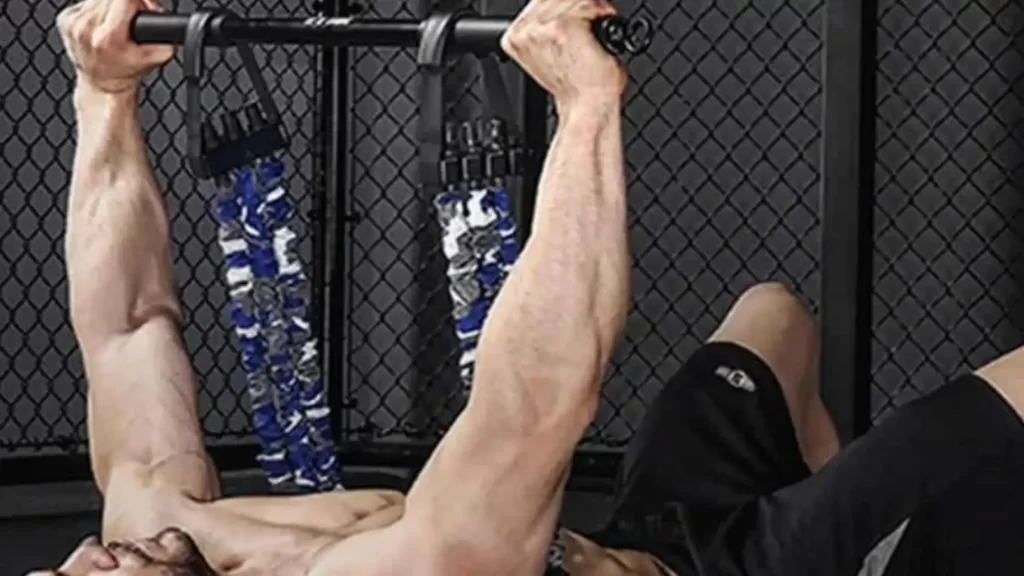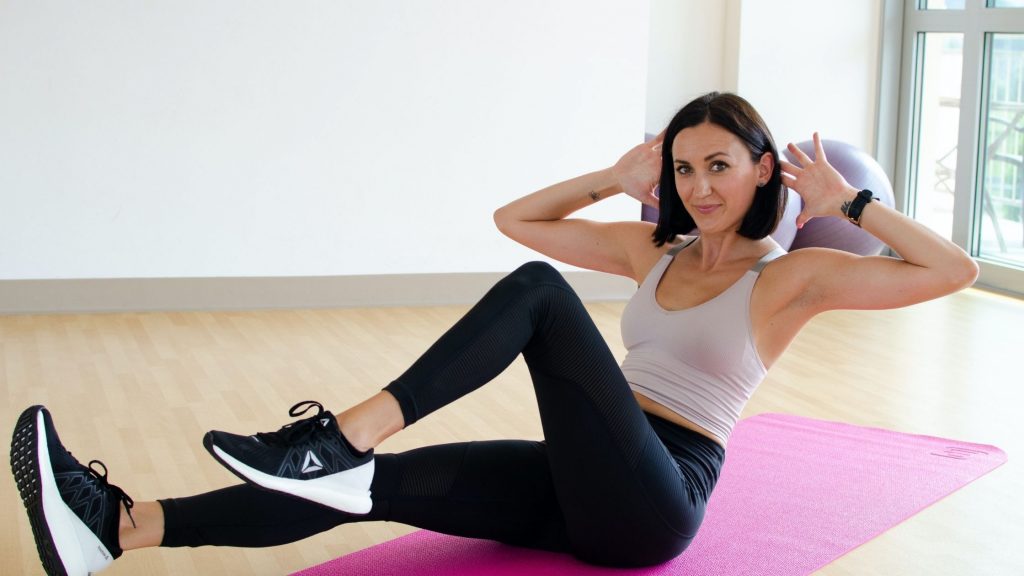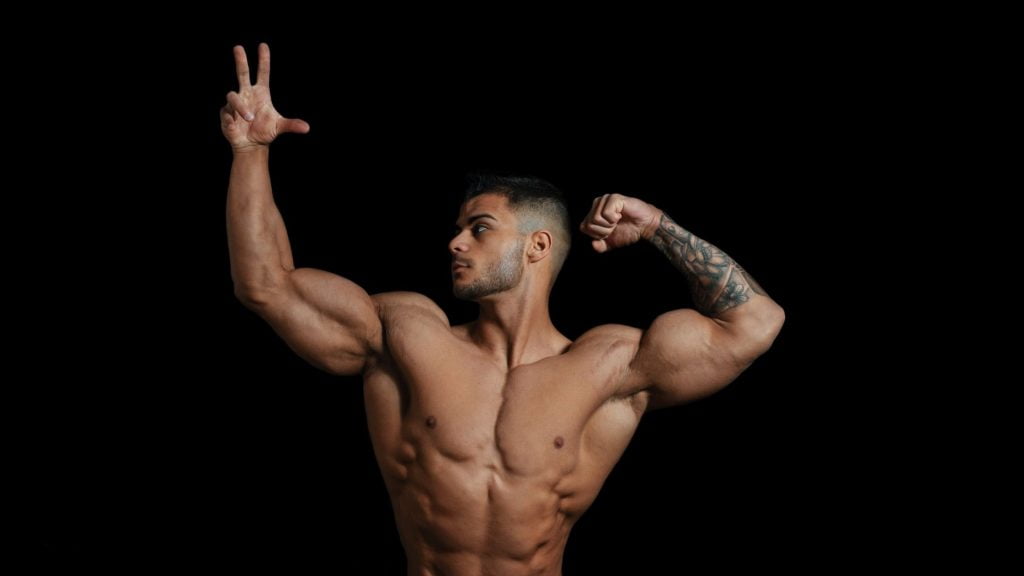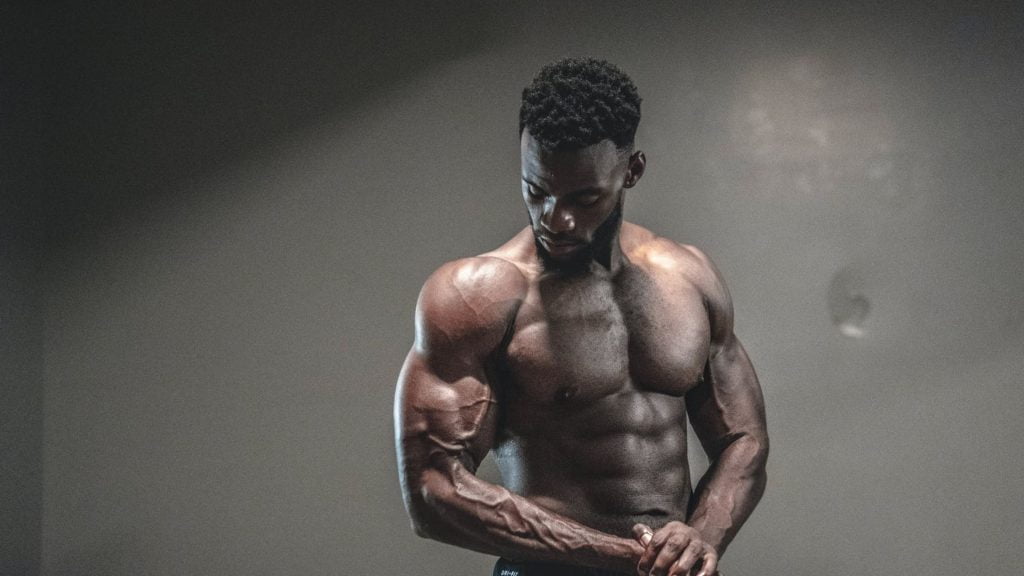How To Master Leg Extensions At Home Under 5 Minutes and Leg extensions at home are something. That might have caught your intrigue lately during the quarantine period. Who thought that exercise this intensive could be done in the comfort of your home. If you want to know more, you are just at the right place.
Are leg extensions necessary? The answer is yes! Although it may be more convenient to skip this exercise, if you have the time or ability to get to the gym at least once a week. There are tons of great reasons why you should prioritize them in your workout.
But what if you don’t have access to the machines or equipment to perform leg extensions? No problem. It turns out that there are plenty of leg extension exercises, especially for people who don’t have access to gym equipment or space at their homes.
My name is Pavel Krotov, and I’m a fitness expert with over 12 years of experience helping clients build healthy habits from the ground up. Alongside personal training and nutrition, I’ve become famous for my ability to stand strong in the face of whatever challenges come your way: mental or physical, large or small.
In this blog, I have focused on exercises that let you tone your leg muscles at home. Let’s now take a look at some of those exercises.

IN THIS ARTICLE
What is leg extension?
A quadriceps are a group of leg muscles that is one of the most important muscle groups for generating power in the leg. Leg extensions specifically target this muscle group and are often performed alone so as not to share the load it creates on the quads. But because of its high impact, certain precautions such as draping a towel over your legs and retracting. Your shoulders should be taken to protect against injury.
Benefits of the Leg Extension
Improves Daily Movement
Some of the most obvious and commonly used muscles in our leg region, which we use for motion and everyday tasks like walking, running, and climbing stairs, is the quadriceps. Exercising them will help make these daily tasks a little less exhausting, and adding this extension to your workout routine. So (specifically focusing on the four groups of quadriceps muscles located at the front area of our thighs) can give anyone an extra edge. When it comes to strengthening their legs in preparation for the rigours of everyday life.
Makes You Stronger in the Gym
The leg extension is an exercise used to strengthen the quadriceps. The muscles in the thighs are called the quadriceps. Which are made up of four different muscles that attach to each of the bones in your pelvis at the top of the femur. Since these muscles are on your outer thigh, their size is very visible no matter what you’re wearing. Also, when your thigh muscles contract they bend your knees and cause you to stand up from a squat or lunge position. Leg extensions target these muscles directly with assistance from other muscle groups surrounding them in the hip, glutes, and abs.
Prevent Injury
Your quads are responsible for keeping your knee joints sturdy. However, they also play a key role in helping your knees move and bend properly. Which often determines how steady or unsteady other parts of your body will be when you walk. If the muscle is injured and develops complications such as tendinitis or inflammation. it can result in paralysis if it cannot provide support to help extend and flex your knees.
ALSO READ: All About HIRT – How To, Benefits & Exercises (5 Min Expert Guide)
Leg extensions at home
Resistance Band Leg Extensions
Resistance band leg extensions make use of the very common resistance bands most gyms have lying around. This takes the need out of having to buy yet another machine. You probably won’t use it too often and puts your movement on a more familiar surface – the Glute Ham Developer or GHD for short!. With 90 degrees of knee flexion, we can isolate and stretch the glutes and hamstrings effectively and safely with only a handful of equipment. A resistance band, a GHD (or suitable substitute), and some free space.
How to do it:
To start, wrap the resistance band around an anchor that is close to your ankles at about ankle height/depth. Afterward, sit on a stability ball or Glute-Ham Developer machine and extend your knees outward, forcing them away from one another (think about spreading eagle). Wrap the band around your ankles so you can feel some tension in the band and then move your knees into extension mode and return on the way back down.
Lunges
Perform 12-15 reps. Because this exercise is very large muscle group focused it may be easier than other alternatives. If you’re just starting out and want to work with heavier loads off of a less stable surface. Such as using resistance tubing looped over the end of stationary apparatus – photos depict. This sort of machine is specifically designed for accommodating oversized bands rather than stationary barbells.
Lunges are typically considered a quad-dominant single-leg movement. Lunges are not typically considered an equipment-heavy exercise. But they can provide a great level of both challenges. And versatility to your workout, even while standing on a yoga mat or outdoors while barefoot if the ground is relatively flat.
Lunges provide a great lower body challenge. While is relatively simple in complexity and a suitable dynamic alternative to a leg extension. If using artificial apparatus is not quite your cup of tea. Forward lunges particularly emphasize stretching forward at the hip joint with less emphasis placed upon knee stability. That may be incorporated into lateral variations from side to side. If one desires to take variety into consideration when building their workout regimen.
How to do it:
Begin standing with a dumbbell in each hand, crossing both arms at the top to form a “T” shape. Take a large step forward into a lunging position with your left leg, allowing it to come as close as possible to touching the floor. Quickly return to the starting position as quickly as possible without sacrificing form. Perform 5-8 reps on each leg making sure not to lock out the knee at the top.
Reverse Lunge
Reverse lunges can be more challenging than normal lunges because your front knee is bending backward as you push yourself up. However, they still stimulate your quadriceps and calves, as well as strengthen the muscles around your hips and glutes. This movement requires a different type of movement than a normal lunge.
How to do it:
Start standing, feet shoulder-width apart. Holding a dumbbell in each hand, take a long step back with your right leg while lowering the front of your upper body slightly toward the floor. When you feel a stretch in your left hamstring, push through. Your left heel to return to standing while raising the dumbbells at shoulder height toward the ceiling. Repeat with your right leg.
Step-Up
Step-ups are power moves when it comes to developing your quadriceps and they can be used as a shaper, like squats. If you want them to challenge you and get more advanced, you can make them single-leg movements with minimal equipment. We recommend 10kg weights, but if you’re advanced, use 30kg. Step-up exercises can be done in place of leg extensions for functional fitness applications or once or twice a week. Step-ups are effective for building power in your quadriceps.
How to do it:
Stand with feet hip-width apart in front of a box that’s just below knee height. Lift your left up to place your foot on the box then push through your left heel to step up onto the box. While stepping onto the box, switch your right leg straight out to the side (so it’s now pointing forward). Keeping both feet on the box, step back down with your right leg first and then bring your left leg down as well-hopped off the other way.
Now switch legs and repeat another 8-12 times for each foot, alternating between hopping up and then hopping down. Once you’ve hopped up (or vice versa depending on which you start with)
Bodyweight Squat
Essential squats are one of the most effective squat patterns you can do. They can help build muscle, lose fat, burn calories, or simply improve balance & coordination. When there is no equipment available. As you perform this exercise, it will engage the glutes, hamstrings, calves, core, and quads with each repetition. Bodyweight squats are suitable for low-impact leg exercises. If you’re recovering from injury. And obviously, they can be done at home without any kind of fancy equipment.
How to do it:
Feet should be shoulder-width apart with the feet pointed slightly outward, and knees pushed out so as to be lower than the hips. Begin by sending your hips back before slowly dropping down into a squat. The thighs should remain parallel to the floor. So it is important not to let them move above parallel unless you have a fully developed set of quadriceps.
Be mindful that as you return from the bottom position to the top position you don’t lock your knees as this might cause undue stress on your knee joint. Perform 15 reps upwards and 15 downwards, for 3 sets in total per session – having another person monitor your progress is necessary for consistency purposes here!
Cyclist Squat
Like other squats, the cyclist squat is a great exercise for developing quad muscles. Some people say that it’s crucial to work each muscle one at a time so as to avoid overtraining. Similarly, others say it’s better to focus on fewer muscles because you burn out quickly if you aren’t careful. If you’re not sure how your body can handle these two approaches, play it safe and stick with doing workouts that only target the vastus medialis (commonly referred to as the “teardrop muscle”), like the cyclist squat.
How to do it:
Start by setting up on your tiptoes placed on top of a raised surface, such as one half of a standard 45 lb. Olympic flat weight plate, so your feet are spaced roughly 4-6 inches apart. Grab a dumbbell in each hand and brace your core. Squat down below parallel – to the point where when you’re in a position when you’d grab below your knees, there’s space between them and the floor.
Then push up through the heels while also pushing out through the knees to return to a standing position. Perform 12-15 lifts, always pausing for 3 seconds in between each rep if possible so as to increase your focus and build endurance.
Split Squat
The split squat is one of the most effective exercises for improving total-body strength – it preferentially targets the quadriceps, hamstrings, and glutes. Single-leg movements are otherwise difficult to perform without equipment or a spotter present.
However, there are also other effective options available that target the lower legs with higher levels of effectiveness for both strength development and improving balance. Weighted vests are particularly useful for this purpose as they provide an alternative to chains, bands, or weight plates by using your body weight instead.
How to do it:
Begin by standing with your feet wider than shoulder-width apart. Hold one dumbbell in each hand on the sides of your body. Step forward with your right foot, lowering yourself towards the floor.
Keep both legs straight as you move into the lunge position, making sure to keep both heels on the ground. Push through your left heel to raise yourself, then take a long step forward with your left leg into another lunge motion, starting over again from when you positioned yourself from where you originally took your first steps from. The exercise should be done in a slow and controlled fashion for 5-10 repetitions on each leg.
ALSO READ: Sissy Squat Machine- 5 Minute Workout For Killer Legs
Bulgarian Split Squats
The Bulgarian Split Squat is a great way to break out of your usual routine, provides challenging sets scaled for all fitness levels through resistance band variations. It is an outstanding exercise for developing strong legs but you’ll definitely want to use a chair or bench for this bad boy! There are several benefits of performing the Bulgarian split squat including, increasing balance, flexibility and coordination, while reducing the risk of injury associated with traditional lunges.
How to do it:
Stand at the edge of a bench, feet positioned slightly apart. Keeping your back straight, begin creating tension in your hamstrings by bending forward at the hips until you can go no further. Pause for one count and then stand back up to the starting position. Perform 8-12 reps. After completing all of your reps, switch legs and repeat with the opposite leg.
Final Thoughts
One of the best ways to improve the look of your legs and improve strength and fitness both for professional use and day-to-day situations is leg extensions and that’s where this article comes in. These exercises can be performed almost anywhere, anytime. They’re a great way to exercise your lower body and they’re perfect for those who need a good way to relieve some stress or just have something that they can do when out at home or in between long commutes.
The equipment required is simple enough – you’ll only need resistance bands! So grab your workout companions, put on some motivating music, and get your leg muscles growing even faster than before!
FAQs
Are leg extensions safe?
The leg extension exercise applies constant tension on the anterior cruciate ligament ACL, so it’s best to avoid this natural way of stretching your legs for people who have ligament injuries. The leg extension is a damaging exercise if you have a currently injured ACL or any other knee injury for that matter. You can still take care of your knees by implementing these types of exercises in another manner if need be.
Should you go heavy on leg extensions?
It might be tempting when looking to increase the effectiveness of your exercise routines to load up a machine with more weight than you know you can comfortably lift, but in doing so you could actually be putting yourself at risk for a potential injury. Some exercises concentrate on increasing the pressure being placed upon a single area of stress, so if you have increased it beyond what your body is capable of handling, there’s a possibility that the structure will suffer damage.
In order to reduce your chances of this happening, you can decrease the amount of weight being used during your workout instead of increasing it. This way any added pressure from adding more weight won’t cause any unnecessary functional abnormalities or harm that may potentially affect your daily functionality or physical comfort.
How do you do leg extensions with dumbbells?
1: Stand up and hold a dumbbell between your feet. 2: Extend your knees until your legs are extended in front of you. 3: Hold the position for one second and then return to the start position 4: Repeat as long as possible.













